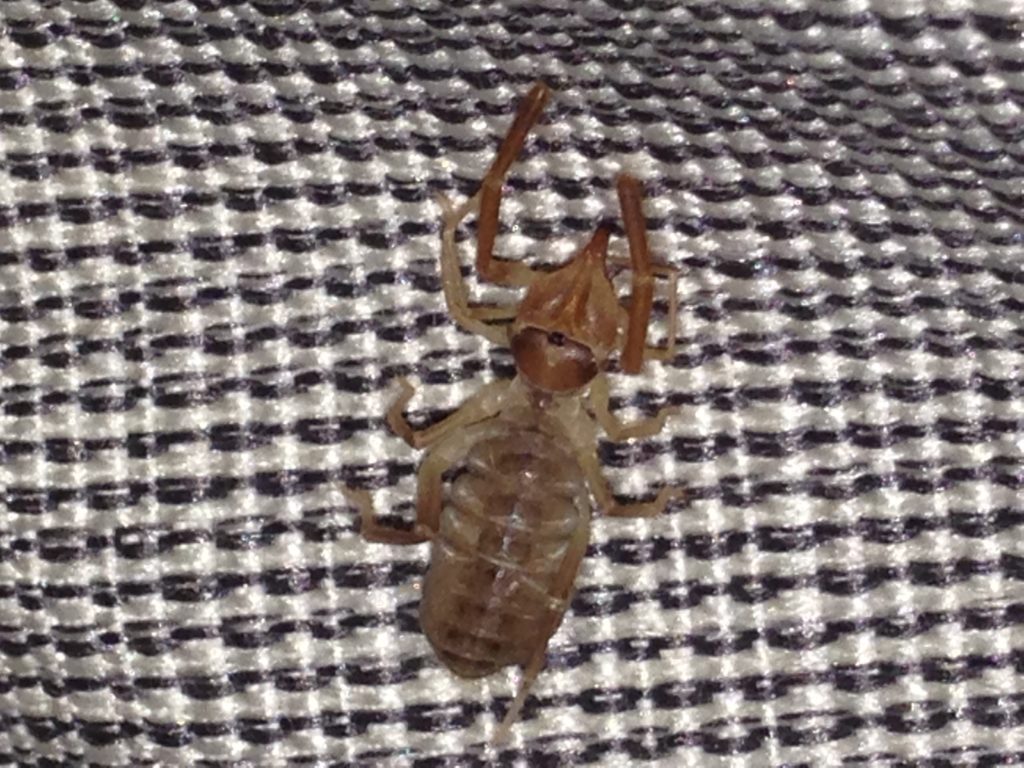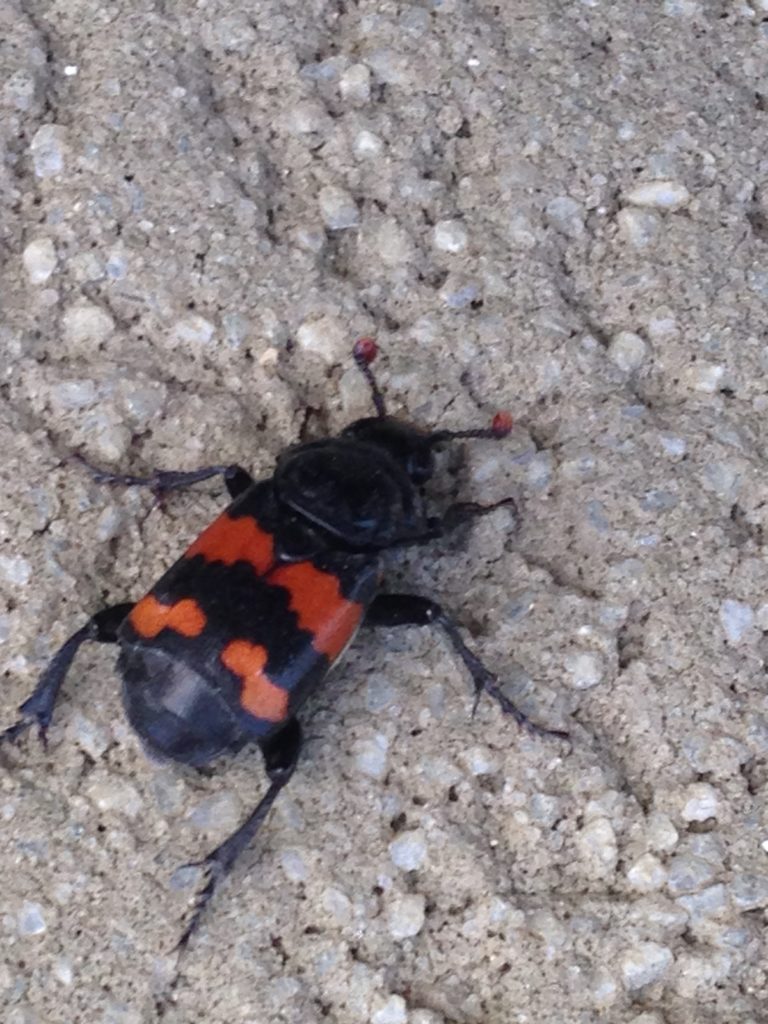Over the last few days we have had some fun visitors of the insect variety, they were unique enough that we had to investigate further.
Solifugae
The first one is called a Solifugae, or as some people would call them a camel spider, wind scorpion, or sun spider.

There are a lot of urban legends about this guy. Everything from them being big enough to eat birds, run at really fast speeds, and that they are deadly to humans.
Well, they are all false. This guy eats ground-dwelling arthropods, and other small animals, does not pose a risk to humans. It can run fast, but only at a top speed of 10 mph. It does not have any venom glands or any type of venom-delivery apparatus. But they can give you a very powerful nip with their mouth parts or their chelicerae, but it is nothing medically significant. They like to avoid the sun, and will move to get away from it.
Carrion beetle
This visitor is a Silphidae it is also called a carrion beetle or burying beetles.
 This guy is one of natures cleanup beetles. Specifically, it is know for taking care of dead animals. These guys have wings but no longer use them. They can be found worldwide and belong to a family of 183 species. I have to admit, these guys, like the camel spider are also a pretty misunderstood visitors.
This guy is one of natures cleanup beetles. Specifically, it is know for taking care of dead animals. These guys have wings but no longer use them. They can be found worldwide and belong to a family of 183 species. I have to admit, these guys, like the camel spider are also a pretty misunderstood visitors.
The Silphidae adults feed in a saprophagous manner: they colonize the carrion during all four stages of decomposition, which are fresh, bloated, decay, and dry. The main areas of decomposition for adults are during both the bloated and decaying stages. The Silphidae larvae mainly inhabit during the decaying and dry stages of the carrion. The primary food source for the subfamily Silphinae is the maggot mass present on the detritus. The Nicrophorinae will colonize the body earlier in decomposition in order to avoid competition with maggots. If there is a sufficiently large maggot mass they will not colonize the carcass. The parental care exhibited by this subfamily is that the adult beetles regurgitate food into the mouths of the young larvae until they are mature. Silphinae colonize later in the decaying process and the adults eat the maggot mass, sometimes leaving little maggot evidence left to estimate a post-mortem interval. In the case of the sexton or burying beetles, Nicrophorinae, the adults will bury small animal carcasses and lay their eggs on it. In some species, a slight depression is made on the detritus for maturing larvae that the adult beetles feed and protect. In both subfamilies the larvae are observed to eat the decaying organic material while the adults mainly consume the maggots. Flies are the major competitor of Silphiade for detritus. If a carcass is infested with maggots, many of the Nicrophorinae will abandon the carcass while members of Silphinae will feed on the maggots.[Source]
Sounds like something that Gil Grissom would really like to find during one of his Crime Scene Investigations. These guys are not considered a nuisance to humans, they also have a large distribution. They have been know to become pests to farmers and will use crops as a secondary source of nutrients.
An interesting side note to this guy. I found him next to our garbage can as I was taking it out to the street for pickup. In the garbage can, there were several gophers that I had trapped during the week. Looks like this guy was just trying to find a new place to lay its eggs.
